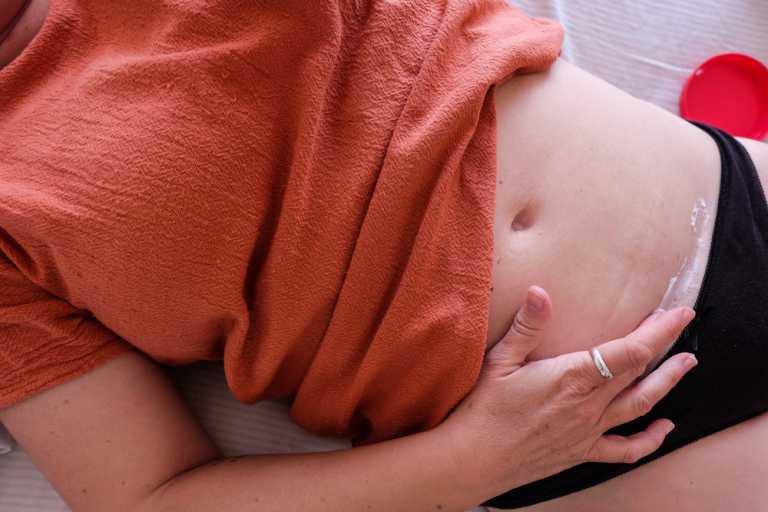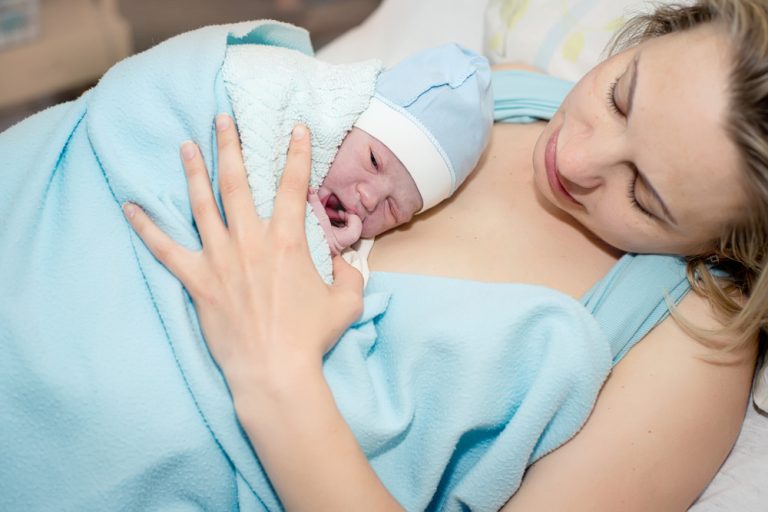Your body experiences drastic changes after a c-section. Vaginal bleeding can occur for about one to six weeks after delivery.
That may seem like a long time, but it is a normal part of your recovery.
How long should I bleed after my c-section?
Vaginal bleeding happens with any birth. It occurs when the placenta detaches from the uterus. The uterus responds by contracting after delivery to help stop the placenta’s blood supply.
This process can take one to six weeks.
How heavy is the bleeding?
The bleeding immediately after birth is quite heavy. So it’s a good idea to have super-absorbant pads readily available at home.
It may be even heavier if breastfeeding, since it stimulates the uterus to contract even more.
Over time, you should see the blood turn a brownish to light pink color and decrease in amount. You might also see small blood clots.
What causes abnormal bleeding?
Women typically lose about one quart (1,000 milliliters) of blood after a c-section. But certain conditions may cause you to lose more than that or experience abnormal bleeding.
These conditions include:
- Muscles in your uterus don’t contract well (most common)
- The uterus turns inside out during birth (rare)
- The uterus tears during labor
- Your placenta separates early from the uterus
- The placenta grows into the wall of the uterus
- Your placenta covers part or all of the cervix (opening of the uterus)
- Some of the placenta remains in the uterus after birth
- An adverse effect of general anesthesia
- Medications received to induce your labor or stop preterm labor
- Tearing of the uterus or cervix
- High blood pressure
- Obesity
These are only a short list of possible causes for abnormal vaginal bleeding. That’s why it’s best to keep a close eye on how much you’re bleeding and immediately report anything abnormal to your doctor.
Why does the bleeding come and go after a c-section?
You may experience heavier episodes of bleeding after your c-section. For example, when you exercise or first wake up in the morning.
But it’s best to discuss any exercise plans with your doctor first. Stress on your body, including physical stress like heavy lifting, might cause more bleeding.
Limit your activity for a bit after delivery.
What can you do to manage the bleeding?
There are steps you can take to manage your vaginal bleeding after a c-section:
- Only use sanitary pads at least the first two weeks after delivery – then, tampons are fine.
- Keep your vaginal area clean and dry as much as possible by bathing regularly and changing pads when saturated or every four hours.
- Change clothes or bedding when soiled.
- Take it slow at home and stop if you experience pain with certain activities.
- Keep and prioritize any postpartum appointments with your doctor.
- Stay hydrated and eat a well-balanced nutritious diet.
- Get as much rest and sleep as you can.
- Avoid straining with bowel movements and treat any constipation.
- Refrain from sexual intercourse for at least six weeks after your c-section.
When do you seek help?
Postpartum hemorrhage is a serious complication of giving birth. One of the first signs of the condition is severe vaginal bleeding.
These guidelines can help you measure your flow:
- Severe Bleeding
You’re soaking through a pad every hour for two or more hours.
- Moderate Bleeding
Soaking through more than one pad in three hours.
- Mild Bleeding
Soaking less than one pad in more than three hours.
- Minimal Bleeding
Spotting or a few drops of blood only.
You will want to report any severe bleeding immediately after you get home from the hospital or a couple of days after birth. Other symptoms of postpartum hemorrhage are:
- decreased blood pressure
- increased heart rate
- low red blood cell count
- swelling and pain in the vagina due to hematoma (pool of blood under the skin)
How is severe vaginal bleeding treated after a c-section?
The goal of treatment is to find and stop the cause of bleeding. Some treatment options your doctor may consider include:
- Medicine or uterine massage to stimulate your uterus to contract
- Removal of placenta pieces still in the uterus
- Vaginal exam to locate the source of bleeding
- Balloon or catheter to put pressure on the bleeding
- Surgery to find the cause of bleeding
- Sealing bleeding blood vessels
- Surgery to remove the uterus
- Medications to replace lost fluids or help stop bleeding
- Blood transfusion
An estimated 1-5 in 100 women will have postpartum hemorrhage. It’s also more likely in c-sections.
Final Thoughts
It’s best to check with your doctor if your vaginal bleeding gets heavier and not lighter with time. You should also report heavy blood loss after the first few days.
It’s okay to ask for help anytime you need it after a c-section. Your doctor is a great resource to help you prepare for your recovery.




